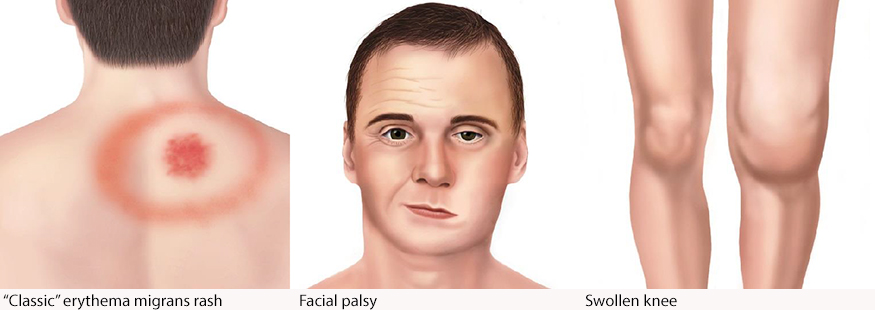What is missing wearable devices
Today, the news has run through the next news about medical devices (couple): New stage in the development of wearable devices: warning the user about an upcoming illness . I will outline in brief.
Professor of Genetics Mike Snyder discovered an inexplicable decrease in the level of oxygen in his blood, accompanied by an increase in pulse, on a wearable device he tested.
After some time (probably a day or two), the signs of the inflammatory reaction became more pronounced. Professor Snyder suggested that once last week he went to nature, where ticks live, he has Lyme disease. He asked the doctor to prescribe an appropriate antibiotic for him, and he recovered.
')
First of all, an enlightened reader, of course, notes that the professor (sic!) Ignores scientific methods where they are needed - in fact, what was his reason for suspecting Lyme disease, if it is not indicated? From the tick you can pick up a few more diseases. In nature, you can get an intestinal infection (amebiasis, enterovirus, salmonellosis), glanders, pseudotuberculosis, various typhoid, listeriosis, hemorrhagic fever with renal syndrome ... sorry, I will not.
He was even more likely to be infected by people at the airport with one of the acute respiratory diseases, including bronchitis, tonsillitis, laryngitis, pharyngitis, etc., caused by viruses (adenovirus, rhinovirus, influenza viruses, parainfluenza, Coxsackie, reovirus, etc.) and bacteria (staphylococci, streptococci, Pseudomonas aeruginosa, and even normal yeast) ... sorry again.
In all these cases, our professor would have experienced an inflammatory reaction that would look to the device as an acceleration of the pulse with a simultaneous decrease in the oxygen content in the blood.
What does the lime? Again the scientific method is violated. To determine Lyme disease, we need additional criteria. The fact of visiting wildlife in the coma is one of the following symptoms: inflammation of the skin with a spot in the center and a crown around, joint swelling or paralytic asymmetry of the face.

Can a wearable device determine this? Wait, why not? It is also connected to a smartphone, various programs are running there. And a person has a wired and non-switchable sensor, called the nervous system! Therefore, we simply run an “expert system” program on a smartphone, which feeds symptoms that the wearable device cannot identify.
This is the answer to the question in the title. If a wearable device claims some kind of health-related information, it should be able to run an expert system, which will transmit primary data (in the case of our professor, suspicion of an incipient inflammatory process), and, having asked the user, will select among thousands of possible diseases of the dozen, which can be cheaply checked in the laboratory or a doctor.
And the task of writing such a system seems to me far more complex than the development of wearable devices. But, reading about wearable gadgets, I do not see anything about expert systems and artificial intelligence in the diagnosis of diseases. I don't see anything about them at all. Maybe someone knows why?
Professor of Genetics Mike Snyder discovered an inexplicable decrease in the level of oxygen in his blood, accompanied by an increase in pulse, on a wearable device he tested.
After some time (probably a day or two), the signs of the inflammatory reaction became more pronounced. Professor Snyder suggested that once last week he went to nature, where ticks live, he has Lyme disease. He asked the doctor to prescribe an appropriate antibiotic for him, and he recovered.
')
What is wrong with this story?
First of all, an enlightened reader, of course, notes that the professor (sic!) Ignores scientific methods where they are needed - in fact, what was his reason for suspecting Lyme disease, if it is not indicated? From the tick you can pick up a few more diseases. In nature, you can get an intestinal infection (amebiasis, enterovirus, salmonellosis), glanders, pseudotuberculosis, various typhoid, listeriosis, hemorrhagic fever with renal syndrome ... sorry, I will not.
He was even more likely to be infected by people at the airport with one of the acute respiratory diseases, including bronchitis, tonsillitis, laryngitis, pharyngitis, etc., caused by viruses (adenovirus, rhinovirus, influenza viruses, parainfluenza, Coxsackie, reovirus, etc.) and bacteria (staphylococci, streptococci, Pseudomonas aeruginosa, and even normal yeast) ... sorry again.
In all these cases, our professor would have experienced an inflammatory reaction that would look to the device as an acceleration of the pulse with a simultaneous decrease in the oxygen content in the blood.
What does the lime? Again the scientific method is violated. To determine Lyme disease, we need additional criteria. The fact of visiting wildlife in the coma is one of the following symptoms: inflammation of the skin with a spot in the center and a crown around, joint swelling or paralytic asymmetry of the face.

Can a wearable device determine this? Wait, why not? It is also connected to a smartphone, various programs are running there. And a person has a wired and non-switchable sensor, called the nervous system! Therefore, we simply run an “expert system” program on a smartphone, which feeds symptoms that the wearable device cannot identify.
This is the answer to the question in the title. If a wearable device claims some kind of health-related information, it should be able to run an expert system, which will transmit primary data (in the case of our professor, suspicion of an incipient inflammatory process), and, having asked the user, will select among thousands of possible diseases of the dozen, which can be cheaply checked in the laboratory or a doctor.
And the task of writing such a system seems to me far more complex than the development of wearable devices. But, reading about wearable gadgets, I do not see anything about expert systems and artificial intelligence in the diagnosis of diseases. I don't see anything about them at all. Maybe someone knows why?
Source: https://habr.com/ru/post/400601/
All Articles